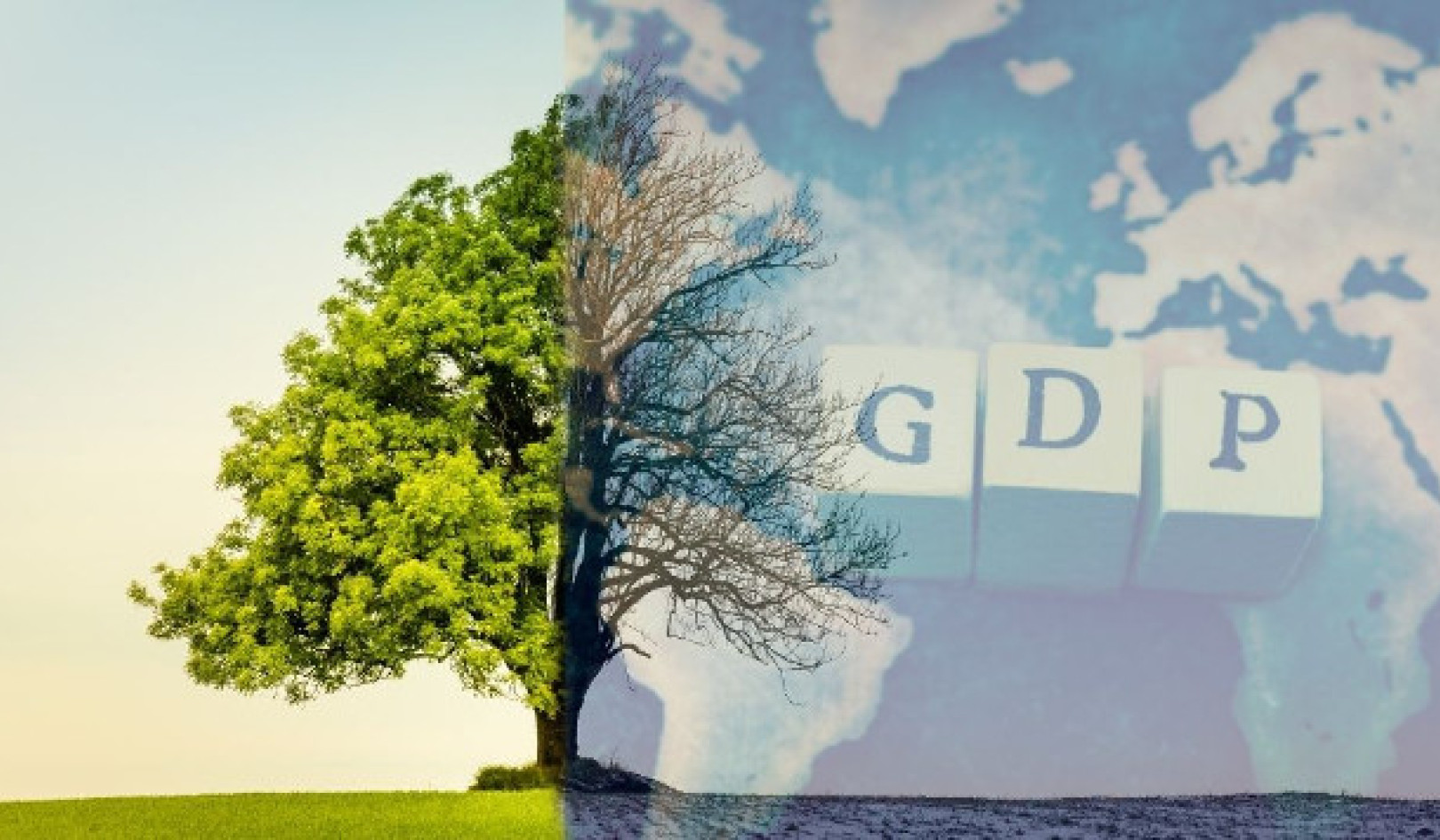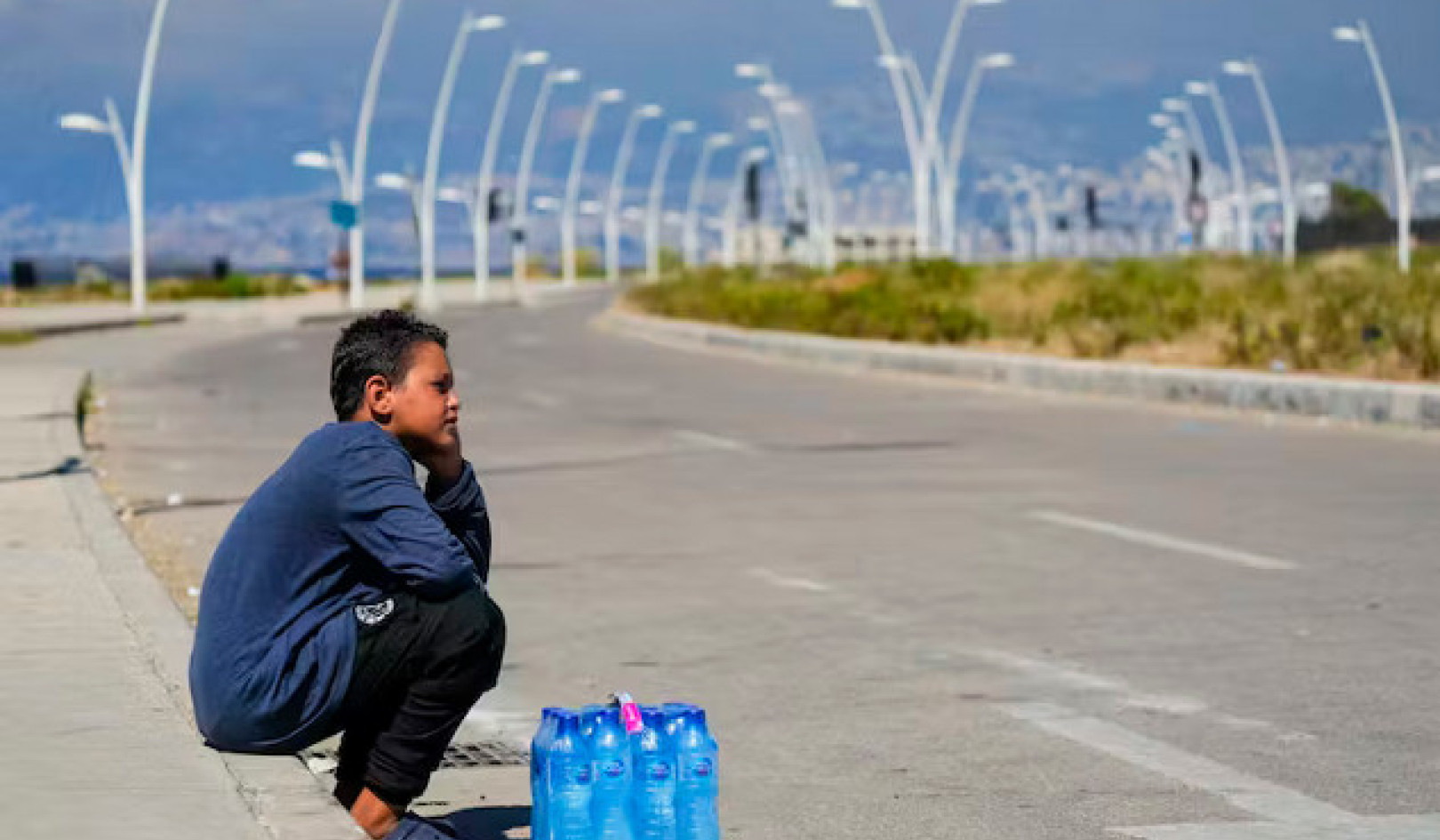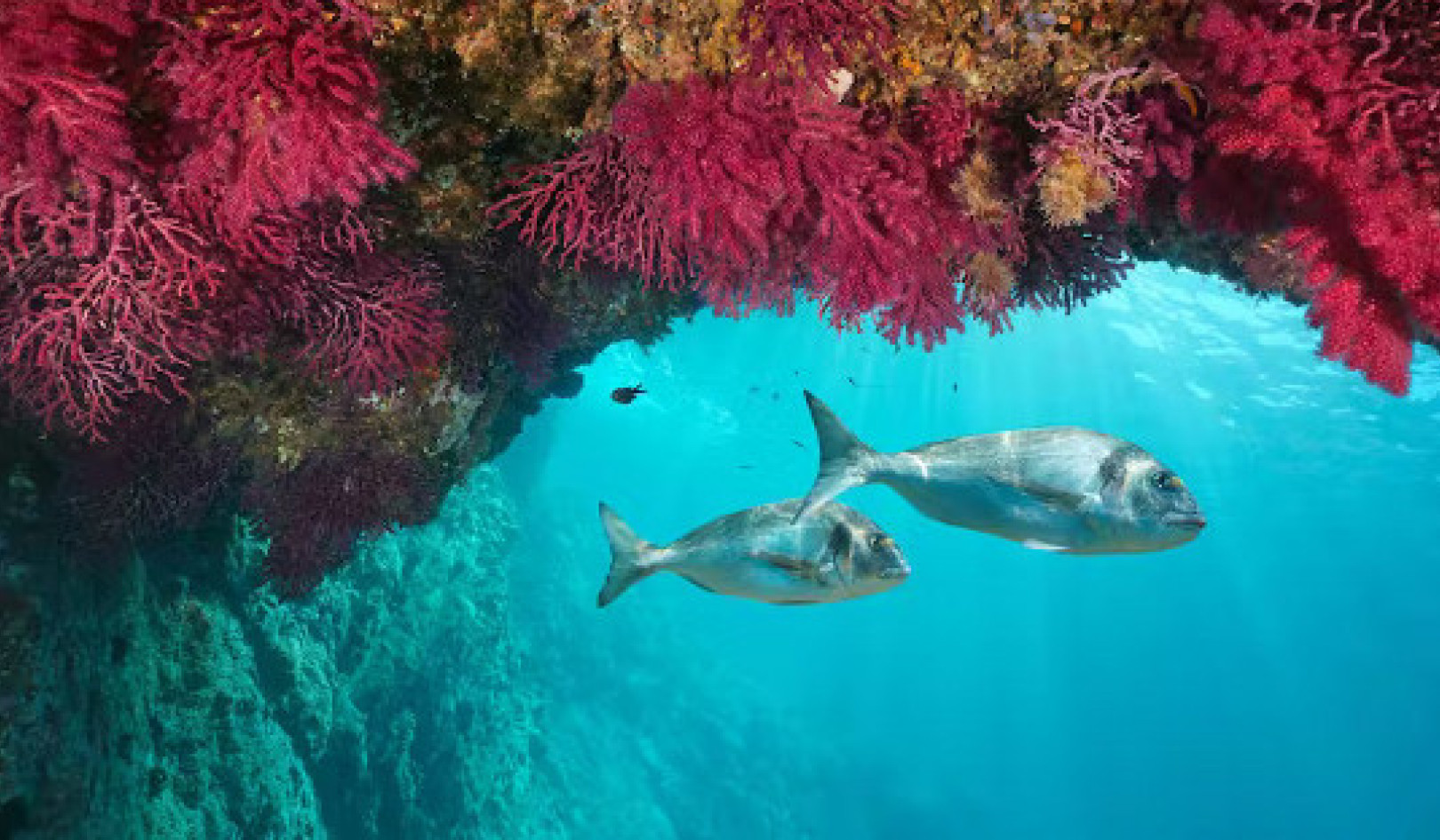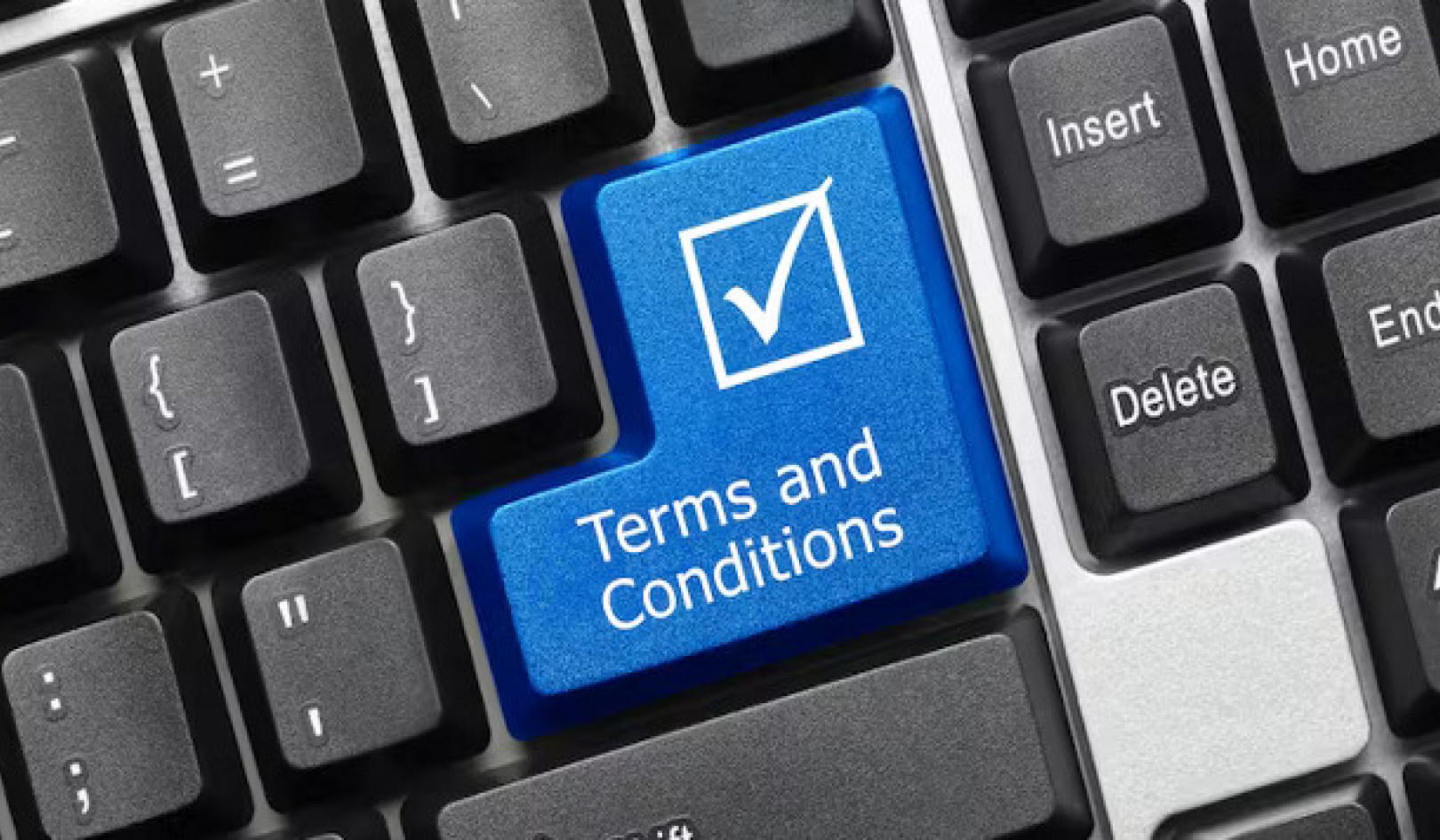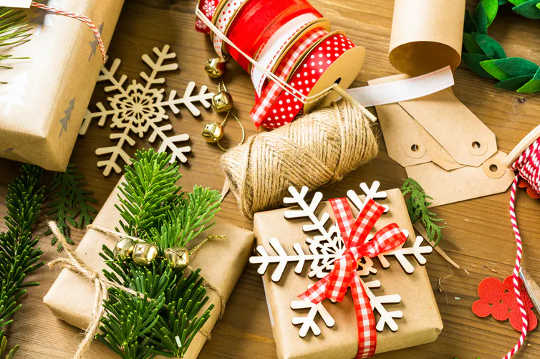
Paper not plastic. Adina Habich/Shutterstock.com
Research shows that waste can double during the Christmas period, and most of it is plastic from gift wrapping and packaging. The British, for example, go through more than 40 million rolls of (mostly plastic) sticky tape every year, and use enough wrapping paper to go around the Equator nine times.
We love plastic. It is an amazing material, so ubiquitous in our lives we barely notice it. Unfortunately, plastic waste has become a serious worldwide environmental and health issue. If we don’t love the idea of a planet covered in plastic waste, we urgently need to reduce our plastic consumption.
Yet old habits die hard, especially over the holiday season, when we tend to let go and indulge ourselves. Typically, people hold off until the new year to make positive changes. But you don’t have to wait – it’s easier than you might think to make small changes now that will reduce your holiday plastic waste, and maybe even start some enjoyable new traditions in your family or household.
Here is our list of suggestions to help you transform this indulgent time into a great opportunity to kickstart your plastic-free new year.
Gifts
The best option is to avoid or minimise gifts, or at least reduce them to a manageable level by suggesting a secret Santa, or a “kids-only” gift arrangement. Of course it’s hard to justify giving no gifts at all, so if you must give…
-
Make a list of presents assigned to each person before you hit the shops. This will help you avoid impulse buys, and instead make thoughtful choices.
-
Look for gifts that will help the recipient eliminate plastic waste: keep-cups, stainless steel water bottles, worm-farm kits, and so on.
-
Gift an experience, event tickets, massage, or a donation to a charity the recipient believes in.
-
Consider making gifts for the natural environment: bee hotels, possum and bird boxes, and native plants are all enjoyable ways to encourage nature.
-
Where possible, avoid buying online so as to avoid wasteful packaging.
-
Consider whether the recipient will treasure their gift or end up throwing it away. Here’s a handy flowchart, which you can also use for your own (non-Christmas) purchases.
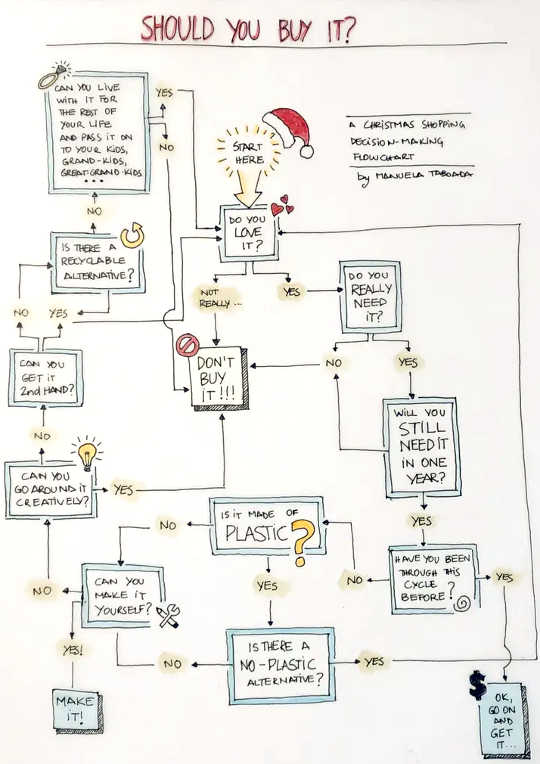
Decisions, decisions. Manuela Taboada, Author provided
Gift wrapping
Not only do we buy gifts, we wrap them in paper and decorate them with ribbons often made of synthetic materials. It might look fantastic, but it generates a fantastically tall mound of waste afterwards. Here’s how to wrap plastic-free in style.
-
Ditch the sticky tape and synthetic ribbons. Instead, use recycled or repurposed paper and tie up with fabric ribbons, cotton, or hemp twine.
-
Try Japanese fabric wrapping (Furoshiki). The big advantage: two gifts in one!
-
Choose gifts that do not need wrapping at all, such as the experiences, event tickets or charity donations mentioned above.
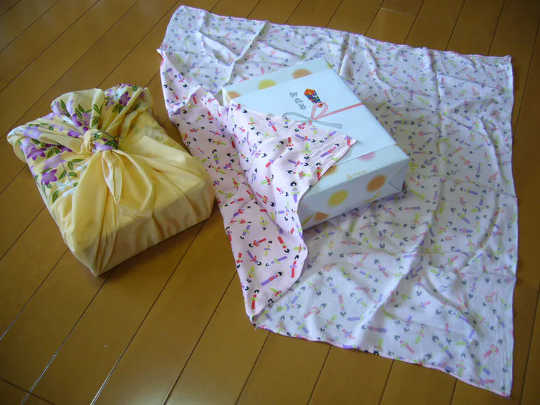
Furoshiki: sustainable and stylish. Katorisi/Wikimedia Commons, CC BY
Tableware
Disposable tableware is convenient – perhaps too convenient. Plastic plates, cutlery and cups are handy if you’re hosting dozens of friends and relatives, but they are used for a minimal amount of time and are often non-recyclable. So, when setting up your table:
-
Use “real” tableware. You can easily find funky second-hand options. Mixed tableware is a trend!
-
If your dishwasher (human or mechanical) can’t handle the strain, consider a washing-up game instead. Line up the guests, time their washing, and give them a prize at the end.
-
If disposables are essential, opt for biodegradable tableware such as paper-based uncoated plates and cups, or wooden or bamboo plates and cutlery.
-
Beware of plastic options labelled as “biodegradable”. Often they are only degradable in industrial composting facilities, which are not available across most of Australia. Check your local recycling options.
Toys
A few years ago, tonnes of plastic waste were found on Henderson Island, one of the most remote places in the world. Among the items were Monopoly houses and squeaky ducks. Toy items are usually non-recyclable, and eventually end up in landfill or scattered throughout the environment.
-
Choose wooden or fabric-based toys. Alternatively, look for toys or games that teach children about the environment.
-
Many board games have dozens of plastic accessories, but not all. Look at the list of contents, and choose ones with less plastic.
-
It might be hard to stay away from Lego or other iconic plastic toy brands. In this case, consider buying second-hand or joining a toy library.
Packaging
This is by far the hardest item to avoid. Lots of non-plastic items come packed in plastic, including most of our food. So, simply…
-
Refuse it: find alternatives that don’t come wrapped in plastic. This might mean changing how and where you buy your food.
-
If there are no other options, choose plastic that can be recycled locally and avoid styrofoam, also called expanded polystyrene, which is not recyclable at most facilities.
-
If you are buying online, you can often ask for your items to be packed with no plastic.
-
For party food leftovers, use beeswax wraps or glass containers, or ask guests to bring their own reusable containers.
There’s a lot going on at Christmas, and it can be easier simply to follow the path of least resistance, and resolve to clean up your act in the new year. But you can avoid getting caught in consumption rituals created by the retail industry.
Make some changes now, and you can have a reduced-plastic Christmas with the same amount of (or even more) style and fun!
About the Authors
Manuela Taboada, Senior Lecturer, Visual Design, Queensland University of Technology; Glenda Amayo Caldwell, Senior Lecturer in Architecture, Queensland University of Technology; Hope Johnson, Lecturer, Queensland University of Technology; Leonie Barner, Associate Professor, Queensland University of Technology, and Rowena Maguire, Senior Lecturer, Faculty of Law, Queensland University of Technology
This article is republished from The Conversation under a Creative Commons license. Read the original article.
Books on The Environment from Amazon's Best Sellers list
"Silent Spring"
by Rachel Carson
This classic book is a landmark in the history of environmentalism, drawing attention to the harmful effects of pesticides and their impact on the natural world. Carson's work helped to inspire the modern environmental movement and remains relevant today, as we continue to grapple with the challenges of environmental health.
Click for more info or to order
"The Uninhabitable Earth: Life After Warming"
by David Wallace-Wells
In this book, David Wallace-Wells offers a stark warning about the devastating effects of climate change and the urgent need to address this global crisis. The book draws on scientific research and real-world examples to provide a sobering look at the future we face if we fail to take action.
Click for more info or to order
"The Hidden Life of Trees: What They Feel, How They Communicate?Discoveries from A Secret World"
by Peter Wohlleben
In this book, Peter Wohlleben explores the fascinating world of trees and their role in the ecosystem. The book draws on scientific research and Wohlleben's own experiences as a forester to offer insights into the complex ways that trees interact with one another and the natural world.
Click for more info or to order
"Our House Is on Fire: Scenes of a Family and a Planet in Crisis"
by Greta Thunberg, Svante Thunberg, and Malena Ernman
In this book, climate activist Greta Thunberg and her family offer a personal account of their journey to raise awareness about the urgent need to address climate change. The book provides a powerful and moving account of the challenges we face and the need for action.
Click for more info or to order
"The Sixth Extinction: An Unnatural History"
by Elizabeth Kolbert
In this book, Elizabeth Kolbert explores the ongoing mass extinction of species caused by human activity, drawing on scientific research and real-world examples to provide a sobering look at the impact of human activity on the natural world. The book offers a compelling call to action to protect the diversity of life on Earth.




















